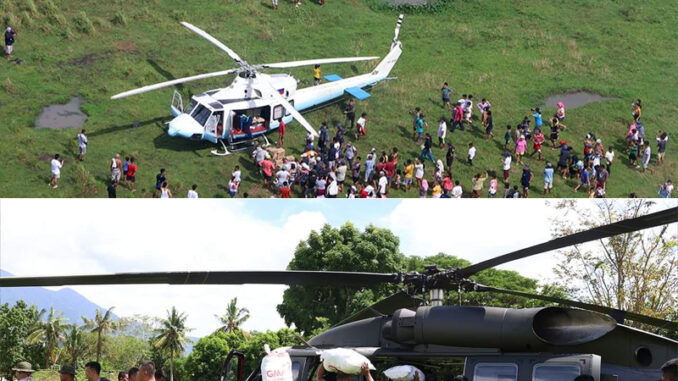
The death toll from Severe Tropical Storm Kristine (Trami) has risen to about 90 to 100 individuals as of late Sunday afternoon based on official and unofficial tallies.
Office of Civil Defense (OCD) administrator Undersecretary Ariel Nepomuceno said his agency expects fatalities to rise as reports from previously cut-off communities pour in.
He noted that most of the fatalities were killed by landslides while a number drowned in the floods that were often accompanied by raging waters.
The official also disclosed that some people were still missing, while many were accounted for but had been injured.
Meanwhile, the NDRRMC said that Kristine’s damage to agriculture was at P1.4 billion, while infrastructure losses have reached P825 million.
There were 25,591 houses partially damaged and 2,049 totally damaged.
Forty bridges and 218 roads also sustained damage due to Kristine.
The severe tropical storm also affected a total of 5,784,298 people or 1,415,438 families in 8,895 barangays nationwide. Of them, 382,154 were still staying in evacuation centers, while 178,742 were seeking temporary shelter elsewhere.
The Council also reported that there were 158 areas that have so far declared a state of calamity in the aftermath of Kristine.
Bicol Region had the most cities and municipalities placed under state of calamity at 78.
This included the entire provinces of Albay, Camarines Sur, Camarines Norte, and Catanduanes, as well as Bulan, Sorsogon.
Calabarzon came next with 63 cities and municipalities under state of calamity:
Cavite (province-wide) – Batangas (province-wide) – Quezon -Tagkawayan-Mulanay – General Luna – Laguna Santa Cruz – San Pedro City – Victoria
Thirteen areas were also placed under a state of calamity in Eastern Visayas:
Samar – Calbayog – Eastern Samar – Jipapad – Arteche – San Policarpo – Oras – Maslog – Dolores – Can-avid – Taft – Sulat – San Julian – Borongan – Maydolong
One area each was put under state of calamity in Ilocos Region, Soccsksargen, Cordillera Administrative Region, and the National Capital Region:
Dagupan City – Magpet, Cotabato – Alfonso Lista (Potia), Ifugao – Quezon City
Rescuers in hard-hit provinces continue to search bodies of water and isolated villages for more survivors and fatalities.
Police in the Bicol region, which saw unprecedented floods, have recorded 38 deaths as of Sunday, most due to drowning.
“We are still receiving many calls and we are trying to save as many people as we can,” Bicol regional police director Andre Dizon told AFP.
“Hopefully, there will be no more deaths.”
Dizon added that “many residents” in the region’s Camarines Sur province are still trapped on roofs and the upper floors of their homes.
While the Bicol Region was the initial focus of concern, fresh information indicates that most storm-related deaths occurred in Batangas province.
The Batangas Provincial Disaster and Risk Reduction Management Office (PDRRMO) said “Kristine” left 59 people dead, with 18 others injured, and 16 still missing, as of Sunday afternoon.
In an interview, Batangas Governor Hermilando Mandanas, who also acts as the PDRRM council chairperson, said he has already extended burial assistance to the bereaved families.
According to him, he already advised the families to bury the deceased relatives immediately before the arrival of new storm Leon.
“A total of P20,000 will be given but since there is still no office yet, we have already given P10,000 cash assistance for burial, and another P10,000 will be given soon. We will also provide housing assistance especially those who are from Cuenca and Talisay,” he said. With report from AFP
Mandanas explained that the landslides in different towns were due to heavy downpours of rain debunking the allegations of quarrying.
Water levels in lakeside towns including Cuenca, Balete, Alitagtag, Talisay, Agoncillo, and Laurel, increased by 1 meter, according to him.
Mandanas said barangays in Lemery and Taal towns were flooded because of the overflowing of the Pansipit River. With report from AFP


Be the first to comment